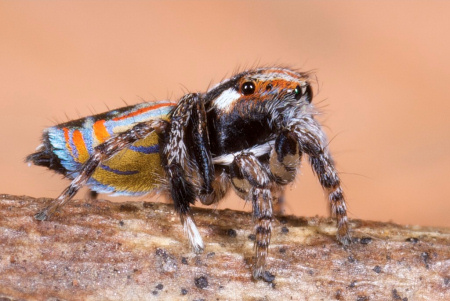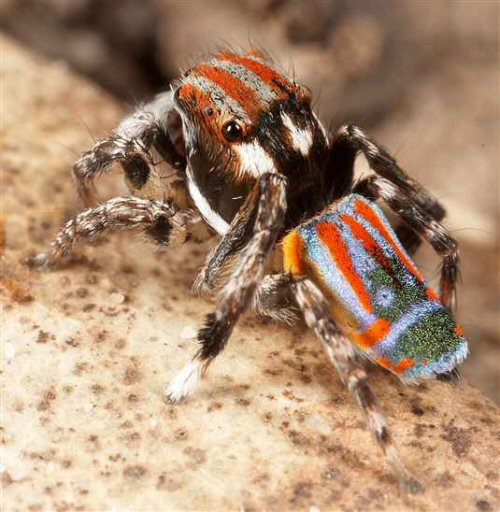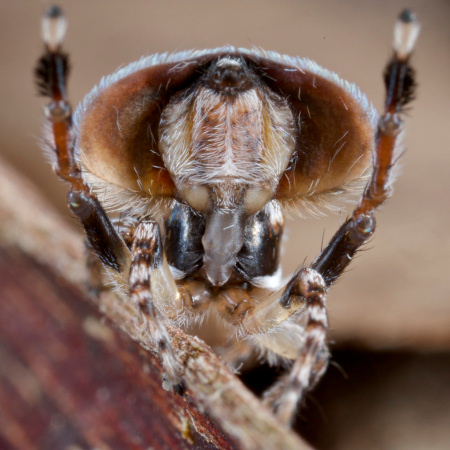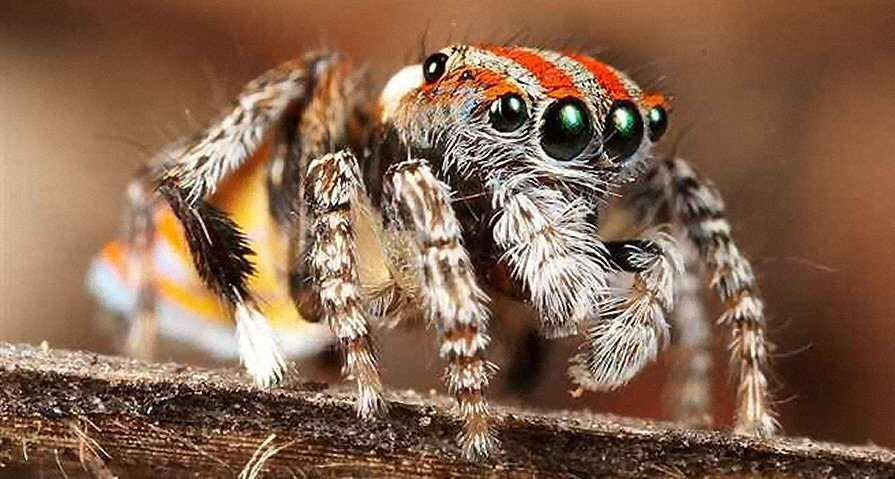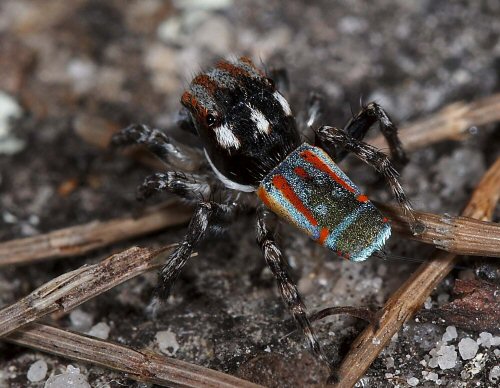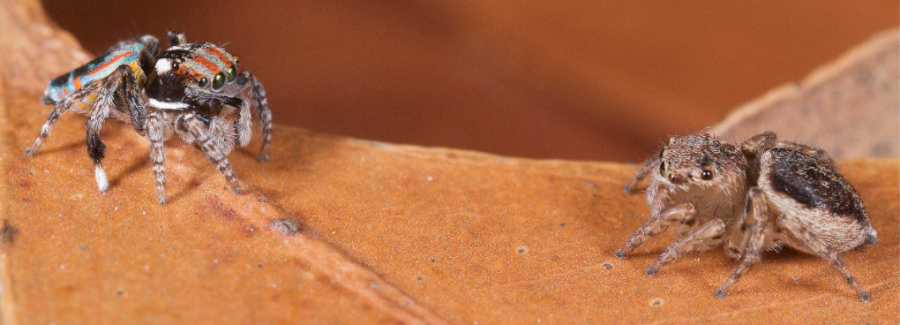
Jumping spiders are often very colourful spiders.
Maratus volans is not an exception.
Although tiny, male spiders have an iridescent colouring of red, green
and blue.
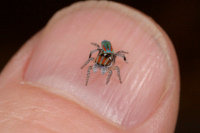
The cephalothorax (head-breast part) and legs are usually dark brown to
black with red stripes but the greenish upper abdomen is patterned with
red and blue stripes.
Females and the immatures of both sexes are dull, brown drab coloured
creatures.
Mature spiders are small with a length of between 4 and 5 mm.
The spider can be found in Queensland and New South Wales.
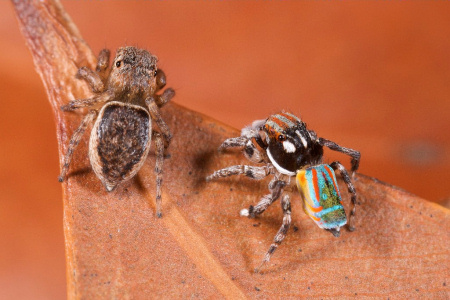

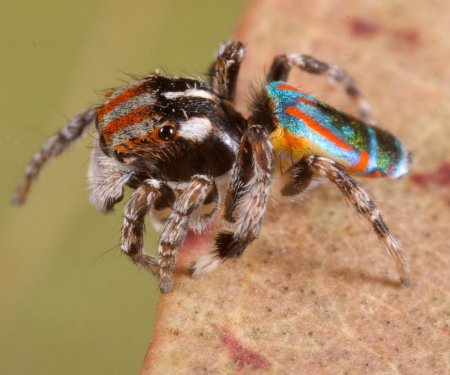
The male spider has two rounded skin-like flaps on either side of his
abdomen that are folded down close against the sides of the body, like a
shawl, when not in use.
The spider has - like all saticids - excellent eye-sight and can detect
prey 20 cm away.
The brilliant colouring is not just for decoration. The peacock spider has
earned its name when he courts with his mate.
He raises his abdomen vertically, expands his flaps and displays them like a
peacock's tail. He also raises his third legs which have a brush of black
bristles and the white-tipped ends.
While vibrating his raised legs and tail, he starts dancing from side to
side or rolls as a sailor as he approaches the female.
Altogether a spectacular courtship dance. After mating the male repeats the
performance and dancing with other females.
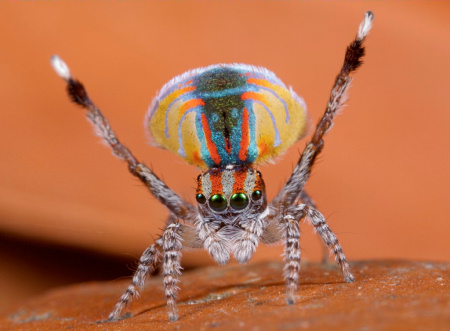
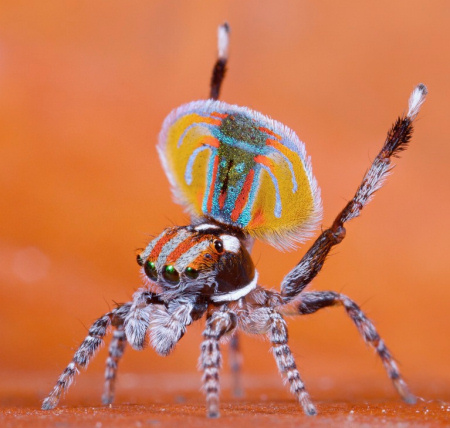
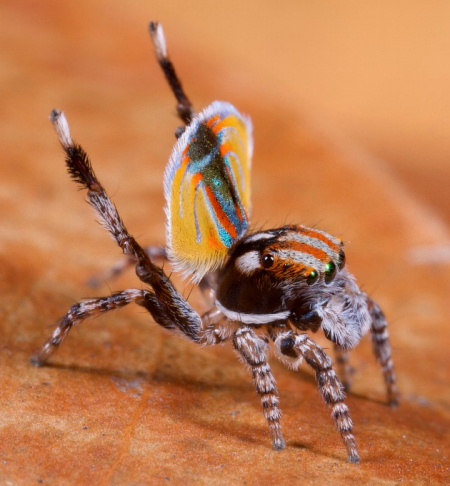
Like many other Australian common spiders the genus name was given by European arachnologists more than a century ago. After detailed studying many Australian spiders are found not to be related to European spiders and will undergo name changes.
Maratus volans has a few common names: flying spider, gliding spider and the preferred name peacock spider.
Although volans in its name suggest the spider can fly, it actually does not use its flaps to extend the distance of its jump. He uses the abdominal flaps only for courtship and displays them like a peacock.
